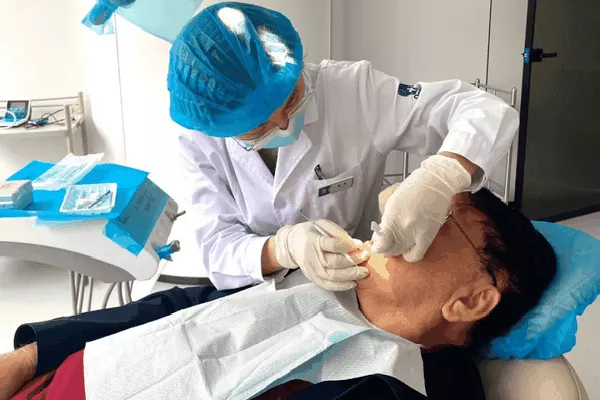Old fillings, once considered a stable solution for cavity repair, can sometimes become the source of tooth pain and discomfort. While fillings are designed to restore and strengthen teeth, various factors can contribute to their deterioration over time, potentially leading to pain or sensitivity. In this article, we’ll delve into the question of whether an old filling can indeed cause tooth pain, exploring the underlying reasons and potential solutions.
Understanding Dental Fillings:
Purpose: Dental fillings are used to repair teeth damaged by cavities or trauma, restoring their function and appearance.
Materials: Fillings can be made from various materials, including amalgam (metal), composite resin (tooth-colored), gold, and ceramic.
Lifespan: While fillings are designed to be durable, they are not permanent and may require replacement over time due to wear, deterioration, or secondary decay.
Common Causes of Tooth Pain Associated with Old Fillings:
Recurrent Decay: Over time, the interface between the filling and the tooth may weaken, allowing bacteria to infiltrate and cause secondary decay beneath the filling.
Fracture or Wear: Fillings can fracture or wear down over time, exposing the underlying tooth structure and potentially leading to sensitivity or pain.
Marginal Leakage: Poorly sealed or deteriorated fillings can allow bacteria and fluids to seep into the space between the filling and the tooth, leading to inflammation and discomfort.
Pulpal Irritation: If a filling is placed too close to the nerve (pulp) of the tooth or if it becomes compromised, it can irritate the pulp, leading to pain or sensitivity.
Gum Recession: Gum recession exposes the roots of the teeth, which may have older fillings. These exposed areas are more prone to decay and sensitivity, potentially causing discomfort.
Signs and Symptoms of Tooth Pain from Old Fillings:
Sensitivity to Hot or Cold: Tooth sensitivity, especially to hot or cold temperatures, is a common symptom of dental issues, including those related to old fillings.
Sharp or Dull Pain: Patients may experience sharp or dull pain in the affected tooth or surrounding areas, particularly when biting or chewing.
Lingering Pain: Pain or discomfort that persists after eating or drinking, especially if it lingers for an extended period, may indicate underlying dental issues.
Swelling or Inflammation: In some cases, inflammation or swelling of the gums around the affected tooth may occur, signaling an infection or irritation.
Diagnosis and Treatment Options:
Dental Examination: A comprehensive dental examination, including visual inspection, X-rays, and possibly other diagnostic tests, can help identify the underlying cause of tooth pain associated with old fillings.
Filling Replacement: If the old filling is found to be deteriorating, leaking, or causing irritation, it may need to be replaced with a new filling to restore the tooth’s health and function.
Root Canal Therapy: In cases where the pulp of the tooth has been affected by decay or trauma, root canal therapy may be necessary to remove the infected tissue and alleviate pain.
Crown Placement: For teeth with extensive decay or damage, a dental crown may be recommended to provide additional support and protection to the tooth, particularly following root canal therapy or large filling replacement.
Gum Treatment: If gum recession is contributing to tooth pain or sensitivity, gum treatment such as grafting may be necessary to restore gum tissue and protect exposed tooth surfaces.
Preventive Measures and Oral Care Tips:
Regular Dental Check-ups: Routine dental examinations and cleanings allow for the early detection and treatment of dental issues, including problems associated with old fillings.
Proper Oral Hygiene: Maintaining good oral hygiene habits, including brushing twice daily, flossing, and using an antimicrobial mouthwash, can help prevent decay and gum disease that may affect old fillings.
Avoiding Trauma: Avoid habits that can damage teeth or existing fillings, such as chewing on hard objects, grinding or clenching teeth, and using teeth as tools.
Conclusion:
In conclusion, while old fillings are intended to provide long-lasting restoration of teeth, they can sometimes become the source of tooth pain and discomfort due to various factors such as recurrent decay, fracture, marginal leakage, pulp irritation, or gum recession. Recognizing the signs and symptoms of tooth pain associated with old fillings and seeking prompt dental evaluation and treatment is essential for addressing underlying issues and restoring oral health.
By understanding the potential causes of tooth pain from old fillings and adopting preventive measures such as regular dental check-ups, proper oral hygiene, and avoiding trauma, individuals can minimize the risk of discomfort and maintain the longevity of their dental restorations. With timely intervention and appropriate treatment, patients can alleviate tooth pain associated with old fillings and preserve their dental health for years to come.
What Is White Tooth Filling Made Of
Which Filling Is Better For Teeth
How Long Does Filling Cavities Take





























